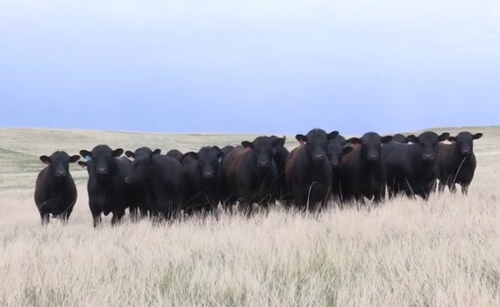
Agricultural News
Derrell Peel Believes Cattle Industry Focus on Animal Health Begins at the Ranch
Mon, 18 Nov 2019 10:19:10 CST
 Mondays, Dr. Derrell Peel, Oklahoma State University Extension Livestock Marketing Specialist, offers his economic analysis of the beef cattle industry. This analysis is a part of the weekly series known as the "Cow Calf Corner" published electronically by Dr. Peel and Dr. Glenn Selk. Today, Dr. Peel talks about how The Cattle industry focuses on animal health and how it begins at the ranch
Mondays, Dr. Derrell Peel, Oklahoma State University Extension Livestock Marketing Specialist, offers his economic analysis of the beef cattle industry. This analysis is a part of the weekly series known as the "Cow Calf Corner" published electronically by Dr. Peel and Dr. Glenn Selk. Today, Dr. Peel talks about how The Cattle industry focuses on animal health and how it begins at the ranch
The U.S. beef and cattle industry has increased production and productivity in many respects in the past several decades. Total beef production in 2020 is projected at a record 27.3 billion pounds. Cattle carcass weights have increased an average of 5 pounds per year for the past 25 years. Beef production per cow has increased over 100 pounds per cow over the same period.
However, animal health is one area that has actually gotten worse in the past 25 years, with respiratory disease the biggest health problem in the beef industry. Bovine Respiratory Disease (BRD) causes 70-80 percent of feedlot morbidity and 40-50 percent of feedlot mortality. Feedlot survey data from Kansas shows that average feedlot death loss has nearly doubled from 0.82 percent in 1995-1996 to 1.60 percent in the most recent 24 months. Respiratory disease is a significant source of animal morbidity and mortality at the stocker and cow-calf levels as well.
BRD causes the most economic losses at the stocker/backgrounding and feedlot levels but it is increasingly apparent that improvements in animal health must begin at the cow-calf level. There are several reasons for this. It is known that the incidence and virulence of BRD is increased by the stressors involved in cattle production especially weaning, commingling and shipping cattle. While shipping and commingling cattle are unavoidable, there are several things cow-calf producers can do to increase the odds that animals are healthy and stay healthy to perform well in later production stages.
Preconditioning programs add value to cattle and the value is consistently reflected in premiums for certified preconditioned calves in sold under programs such as the Oklahoma Quality beef Network (OQBN). Weaning is arguably the most important component of preconditioning and preconditioning protocols routinely call for a minimum of 45 days of weaning prior to marketing calves. Anecdotal indications are that 45 days is becoming a bare minimum with 60 or more days of weaning preferred by buyers struggling with the continuing health challenges of cattle. Calves noted as unweaned are currently discounted four to over five percent in Oklahoma auctions.
Complete vaccinations, including two rounds of respiratory vaccine, are important before cattle are marketed. Cattle arriving at stocker and feedlot operations are already subjected to pathogen exposure and the stress of commingling and shipping which compromise the ability of vaccines to support animal health at that point. Bovine Viral Diarrhea virus (BVDv) is one component of BRD and, though it occurs with low incidence in cow-calf operations, causes significant reproductive and pre-weaning losses when it occurs and is the source of persistently infected (PI) feeder cattle that contribute to BRD impacts in stocker and feedlot operations.
Castration, dehorning and deworming are all important prior to marketing. Research shows that males marketed as bulls are three times more likely to get sick in stocker and feedlot operations and have reduced performance, due to both the stress of castration at heavier weights and also because lack of castration is likely an indicator of inadequate prior calf health management. For this reason, bull calves are currently discounted roughly seven percent at auction.
Lifetime animal health management is increasingly recognized as a significant challenge for the beef cattle industry with implications ranging from fetal programming that impacts lifetime health and productivity; to genetic identification of disease susceptibility; to improved economic incentives for better coordination of animal health management across multiple production sectors. Improved animal health management not only increases ranch returns but increases value to the entire industry.
Source OSU
WebReadyTM Powered by WireReady® NSI
Top Agricultural News
More Headlines...



















